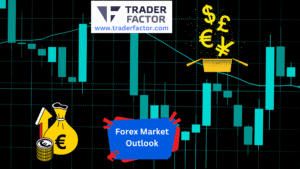The market spotlight this week is on two pivotal indicators, the FOMC meeting minutes and the Core PCE Price Index. Traders and investors closely scrutinize these for insights into the Federal Reserve’s stance on interest rates and inflation. The FOMC minutes offer a deeper understanding of recent policy decisions, shedding light on the Fed’s economic outlook. Meanwhile, the Core PCE Price Index, the Fed’s preferred inflation gauge, plays a crucial role in shaping future rate decisions. Stay tuned as these key releases could heavily influence market sentiment, signaling what’s next for monetary policy and the broader economy.
Table of Contents
ToggleMarkets Snooze as US and UK Take a Holiday Break
Today, global markets are subdued due to holidays in the US and UK. Bank holidays often lead to reduced trading volumes and muted activity. With major financial hubs closed, traders are left with limited market catalysts.
Key Updates
- Gold (XAU/USD): Currently trading at $3,347, after a bullish Friday.
- GBP/USD: Stable at 1.35789, reflecting limited movement.
- EUR/USD: At 1.14099, rises despite Friday’s tariff threats from Trump.
- AUD/USD: Trading at 0.65202, showing little change.
US Indices
- Nasdaq 100: Opened at 20,915.66, down 0.93% from Friday.
- S&P 500: Opened at 5,802.82, slipping 0.67%.
- Dow Jones: Opened at 41,603.07, declining 0.61%.
European Central Bank President Christine Lagarde is set to speak today. Her comments may provide insights into the ECB’s monetary policy direction. Markets will closely watch for any hints on inflation or interest rate adjustments.
US Data Day: Confidence, Orders, and Dollar Moves Await
Tuesday brings limited market activity during Asian and London sessions. However, the New York session will feature key economic releases from the US. The US dollar’s reaction will depend on the overall tone of these reports. Strong data could fuel market optimism and bolster the dollar. Conversely, weaker readings might prompt caution and weigh on the currency. Traders and investors will watch these figures closely to assess the US economy’s trajectory.
Core Durable Goods Orders m/m
Core Durable Goods Orders track the monthly change in orders for durable goods, excluding transportation items. Durable goods are products expected to last three years or more, like machinery or electronics. Excluding transportation gives a clearer picture of underlying demand.
This data reflects business investment trends and overall economic health. When businesses order more durable goods, it suggests confidence in the economy. Conversely, a decline can signal caution about growth prospects.
A stronger-than-expected reading often supports the US dollar. It signals economic strength and potential for tighter monetary policy. Meanwhile, weaker data may pressure the dollar, suggesting slower growth.
Durable Goods Orders m/m
This report measures the total monthly change in orders for durable goods, including transportation items like airplanes and vehicles. It provides a snapshot of manufacturing activity and demand.Why Is It Important?
Durable Goods Orders highlight the overall demand for long-term investments in physical assets. It’s an important indicator of economic momentum across sectors.
Like Core Durable Goods, a positive reading may boost the dollar, showing robust economic activity. A weak print, however, could dampen optimism and weigh on the currency.
CB Consumer Confidence
The Conference Board’s Consumer Confidence Index gauges household sentiment about the economy. It asks consumers how they feel about current and future conditions, including the job market.
Consumer confidence drives spending, which is a major component of the US economy. High confidence suggests households are likely to spend more, supporting economic growth.
A strong confidence reading typically strengthens the dollar. It indicates resilient consumer demand, which could lead to economic expansion. Weak confidence, on the other hand, raises concerns about potential economic slowdown.
Inflation, Rates, and FOMC Minutes: A Midweek Market Feast
Wednesday promises to be an eventful day for traders, with significant economic reports from Australia and New Zealand, as well as the release of important data and insights from the US.
Australia’s CPI Report
The Consumer Price Index (CPI) measures inflation by tracking changes in the prices of a basket of goods and services. It’s a key indicator of price stability in the economy. Australia’s CPI figures are expected to show a year-on-year increase of 2.3%. This number will be closely compared to the Reserve Bank of Australia (RBA)’s inflation target range of 2-3%. If inflation aligns with or exceeds the target, it may signal a stronger economy and could prompt the RBA to reconsider its monetary policy stance.
A higher-than-expected CPI could boost the Australian dollar as traders may anticipate tighter monetary policy. Conversely, a lower reading might weaken the AUD as it suggests subdued inflation, keeping the RBA dovish.
New Zealand’s Official Cash Rate Announcement
The Official Cash Rate (OCR) is the interest rate set by the Reserve Bank of New Zealand (RBNZ). This rate influences borrowing and lending costs across the economy. The RBNZ is expected to keep the OCR unchanged, but the accompanying statement can offer insights into its future policy path. With inflation still a concern, any indication of future rate adjustments will be crucial.
If the RBNZ hints at further tightening to combat inflation, the New Zealand dollar (NZD) could strengthen. Conversely, a dovish stance or concerns about economic growth might weigh on the currency.
FOMC Meeting Minutes
The Federal Open Market Committee (FOMC) meeting minutes provide detailed insights into the discussions around recent monetary policy decisions. These minutes reveal the Fed’s view on key factors such as inflation, labor markets, and future economic risks.
The Fed has been cautious with its rate hikes recently, keeping a close eye on inflation, which has shown signs of cooling. Fed Chair Jerome Powell’s latest statements suggest a data-dependent approach toward future decisions, with the possibility of holding rates steady for longer.
Market participants will look for signals about the Fed’s outlook for inflation and interest rates in the coming months. Clear indications of policy direction can shape expectations for the dollar’s future movement.
Hints of potential rate hikes in 2025 may support the US dollar. On the other hand, signals of a long pause in rate hikes could weigh on the greenback.
Richmond Manufacturing Index
This index measures manufacturing activity in the Fifth Federal Reserve District. It’s based on surveying manufacturers about their business conditions, including new orders, shipment volumes, and employment. The manufacturing sector often acts as a barometer for the broader economy. A strong reading suggests robust economic activity, while a weak figure may point to slowing growth.
A better-than-expected index reading could reinforce confidence in the US economy, supporting the dollar. Conversely, a disappointing result may raise concerns and pressure the currency.
BOE Speaks, US GDP Drops: A Day of Big Decisions
Thursday features multiple significant economic releases in the New York session, as well as a crucial speech by the Bank of England’s Governor. Here’s a look at the scheduled events and their potential impacts on the US dollar and British pound.
Prelim GDP q/q
The Preliminary Gross Domestic Product (GDP) quarterly report measures the annualized change in the value of goods and services produced within the US. This is considered a broad indicator of economic health.
A stronger-than-expected GDP growth reading signals a robust economy, which can strengthen the dollar as it suggests higher demand and potential for tighter monetary policy. A weaker reading, however, might hurt the dollar by raising concerns over the economy’s performance.
Unemployment Claims
This weekly report tracks the number of individuals filing for unemployment benefits for the first time. The data highlights the health of the US labor market.
Lower unemployment claim numbers typically reflect a strong labor market, which can boost the dollar as confidence in the economy grows. Conversely, rising claims can weigh on the dollar, signaling weaker employment conditions.
Prelim GDP Price Index q/q
The Prelim GDP Price Index measures changes in the prices of goods and services included in GDP. It provides an inflationary perspective tied to economic output.
Higher-than-expected figures indicate growing price pressures, which could prompt the Federal Reserve to maintain a more hawkish stance, strengthening the dollar. A lower reading might suggest easing inflation and reduce rate hike expectations, pressuring the currency.
Pending Home Sales m/m
This metric tracks the change in the number of homes under contract to be sold but still awaiting the final transaction. It’s a key gauge of the housing market’s performance.
A rise in pending home sales supports the notion of a healthy housing market, bolstering economic sentiment and potentially lifting the dollar. A decline, however, could raise concerns over consumer confidence and economic growth, weighing on the currency.
Bank of England Governor’s Speech
The BOE Governor is set to discuss the bank’s monetary policy, a highly watched event for GBP traders. Currently, the Bank of England’s policy rate stands at 4.75%, maintaining a tight stance to tackle high inflation.
If the Governor signals further rate hikes due to persistent inflation, the pound (GBP) could benefit as markets price in tighter monetary conditions. On the other hand, dovish remarks suggesting caution over growth concerns might weaken the pound. Markets will focus closely on any forward guidance regarding interest rates or economic risks.
Global Data Frenzy: Inflation, GDP, and the Fed’s Favorite Index (PCE)
Friday presents a range of critical economic releases from multiple nations, each with significant implications for global currencies. Here’s a closer look at these events and how they could shape market movements.
Australia’s Retail Sales Report
The Retail Sales report indicates the change in the total value of sales at the retail level. It serves as a key measure of consumer spending, which drives much of the Australian economy.
Stronger-than-expected retail data can boost the Australian dollar (AUD) as it suggests a healthy economy and increased consumer confidence. Conversely, a weaker figure could raise concerns about economic growth and weigh on the currency.
Germany’s Prelim CPI m/m
Germany’s Preliminary Consumer Price Index (CPI) measures changes in the prices of goods and services at the consumer level. As the largest economy in the Eurozone, Germany’s inflation data plays a significant role in shaping expectations for the European Central Bank’s (ECB) monetary policy.
A higher-than-expected CPI reading could strengthen the euro (EUR), as markets anticipate a more hawkish ECB stance. A lower reading might suggest easing inflationary pressures, which could weaken the euro.
Spain’s Flash CPI y/y
Similar to Germany’s CPI report, Spain’s Flash CPI measures the annualized change in consumer inflation. While Germany’s data carries heavier weight, Spain’s figures still contribute to the broader picture of inflation across the Eurozone.
If Spain’s CPI exceeds expectations, it can support the euro by reinforcing expectations of ECB tightening. On the other hand, lower-than-forecasted inflation could dampen the currency’s strength as rate hike probabilities decrease.
Canada’s GDP m/m
Canada’s GDP report measures the monthly change in the value of all goods and services produced in the country. It is a direct indicator of economic performance.
A stronger GDP figure often benefits the Canadian dollar (CAD), as it signals a robust economy and increases the likelihood of a more hawkish stance by the Bank of Canada. Conversely, a weaker reading could pressure the CAD as it signals slowing economic activity and potentially dovish monetary policy.
US Core PCE Price Index m/m
The Core PCE (Personal Consumption Expenditures) Price Index is a measure of the change in prices of goods and services consumed in the US, excluding food and energy. It is the Federal Reserve’s preferred inflation measure when setting monetary policy.
The Core PCE is critical because it captures consumer behavior and reflects inflation trends with precision. If the index shows higher-than-expected inflation, the Federal Reserve may lean toward additional rate hikes, which can strengthen the US dollar (USD). A weaker reading, however, could signal easing price pressures and support a more cautious Fed stance, potentially weakening the dollar.
Conclusion of the Market Outlook
The FOMC meeting minutes and Core PCE Price Index hold the power to shape the path of monetary policy and influence market sentiment. By revealing the Fed’s perspective on inflation and economic risks, these key indicators can alter expectations for future interest rate adjustments. With traders and investors analyzing every detail, these releases could significantly impact financial markets and the broader economy. As the Fed weighs its next steps, markets will stay attuned to these signals, setting the stage for potential volatility and crucial shifts in policy direction in the months ahead.
Disclaimer:
All information has been prepared by TraderFactor or partners. The information does not contain a record of TraderFactor or partner’s prices or an offer of or solicitation for a transaction in any financial instrument. No representation or warranty is given as to the accuracy or completeness of this information. Any material provided does not have regard to the specific investment objective and financial situation of any person who may read it. Past performance is not a reliable indicator of future performance.

















